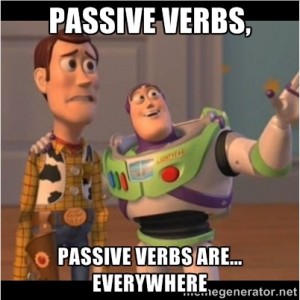How to Lose an Audience in 10 Days: Blog Writing Worst Practices
Here at EVG, we talk a lot about “best practices” because we don’t want to just slide by doing the bare minimum. We want to excel and be the best. However, this post is about worst practices because I think it’s equally important to highlight common mistakes that can derail your work. If you actively look for them, you can avoid them and be a step closer to those best practices. Think of this as a How to Lose a Guy in 10 Days-style article, but about blog writing.
As a writer and editor, I see a lot of writing mistakes. Whether they’re grammar errors or just poor practices, they can trip up your readers, making your content difficult to follow and understand. Blogs are intended to be readable and conversational in tone. Poor practice in writing not only directly affects your current readers, but readability also affects SEO and potential future readers (and customers). Below I’ve identified a few of the most common mistakes I run across, why they happen and how they affect your content and audience.
1. “Helps to”
Does social media marketing help to expand your audience or does it expand your audience? From my experience, writers sometimes avoid making direct claims because doing so establishes a position of authority. Authority means responsibility . . . and liability. Here’s what you should do instead: Research. Know your stuff. Claim it. Own it. Leave the “helping” to the helping verbs.
2. Overusing 3rd person:
“If one were to do this one may see these kinds of results.”
Speak to your audience. Use personal and direct language. Your readers want to know how your advice will benefit them. Your blog is not the place to practice your “henceforth referred to as the undersigned” legal language.
Use this opportunity to focus on your audience. Utilize 1st and 2nd person me, you, I and we. Give personal examples of what you’ve done and make applications for what actions your audience can take.
3. Using amount/ number of incorrectly
This usually occurs due to oversight or just thoughtlessness in writing. It’s a fairly easy fix. Use number of for things that can be counted. Use amount of for things you can’t count.
Example: “There were a number of errors in the text.” You can count errors.
Example: “The amount of support he received overwhelmed him.” You can’t really count support without specific parameters or units. Was it financial support or emotional support or both? We don’t know.
While it may seem like a minor issue, using amount and number incorrectly can make an article confusing for your readers. Even if they don’t recognize the specific grammatical error, it will raise a red flag. Anytime you cause your readers to trip over your words, you risk losing them (and their business) right there.
4. Misusing less/fewer
This one is similar to the previous one, but specifically relates to a comparison. Use fewer for things that can be counted. Use less for something that can’t be counted.
Example: “There were fewer errors in the text this time.” (It is understood that the comparison is to a previous time.)
Example: “He received less support than he expected.” (Reality in comparison to expectations).
5. Removing all contractions
Your blog should be conversational and readable. Stiff and confusing language will cause you to lose your audience. Use reasonable contractions where you would naturally use them (no, y’all and ain’t are not reasonable contractions for use in your blog).
6. Attaching a link to too many words (or read more).
Links should be attached to words or phrases that are relevant to the content being linked. If I see the link text “content marketing case studies” in blue, I assume the link will take me to something related to content marketing case studies. It’s not a complicated concept, but it’s consequential and does take thought. Don’t make things confusing or difficult for your readers. Link text also affects SEO, so keep it short and purposeful.
Linking to read more or check this out looks spam-y. Readers won’t click and search engine bots will associate that filler text with the content.
7. Superfluous be verbs

Well-chosen verbs add power to content, especially short content. Blog articles tend to be short, which is great for your audience’s attention span, but it means that every verb needs to be doing something for your content. Sometimes writers settle into the habit of using state-of-being verbs instead of actions verbs. State-of-being or be verbs for short include the following: am, is, are, was, were, be, being and been. While they serve a purpose and have a place, that place is not in every sentence of your blog.
Be verbs lack the finesse in description and power in action that other verbs have. It’s not that you shouldn’t ever use them, but you should be aware of how often you use them and look to replace them with action verbs whenever possible. Next time you finish writing content, use the “Find” feature in Microsoft Office Word or Ctrl + F to search for the most common culprits is, are, was and were.
If these worst practices plague your blog, I suggest adding rules to your style guide and making a checklist for writers and editors to use (at least until it becomes habit). These mistakes sometimes get overlooked, but can greatly impact the process of turning readers into customers. If you can turn subconscious errors into intentional (albeit small) victories, that’s best practice.
Charlotte Stapp—Marketing Coordinator/Writer & Editor



